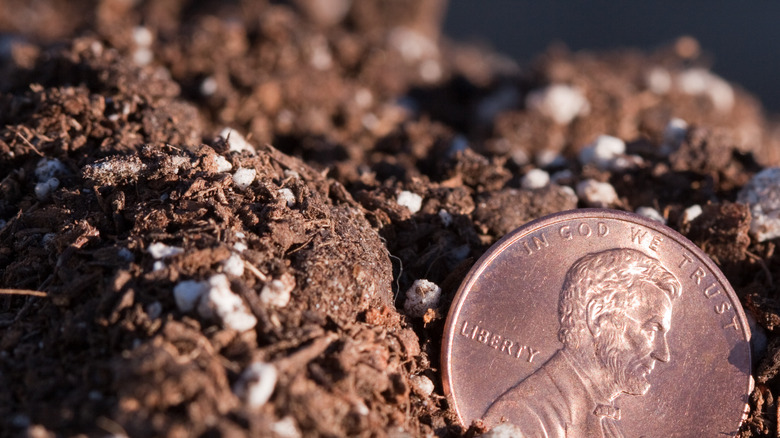It may seem like a bit of superstition or something your grandparent told you to do from their tried-and-true gardening tips, but there is real value in burying pennies in your lawn (or your garden, for that matter). Pennies contain copper, which is a metallic element that can support the needs of plants. Not only is this a valuable nutrient, but it also works as a simple and effective antimicrobial and antifungal tool.
If you have some pennies lying around, you may want to place a few into the dirt around your yard to improve the soil quality and force irksome slugs to find a new area to call home. Copper can also be a great choice for protecting your lawn from bacterial spread — just as it can help a vase of fresh-cut flowers thrive a bit longer.
Not everyone has a stack of pennies lying around, however. In that case, you can use copper sulfate, an additive you can apply like fertilizer to your lawn for the same benefits. If you have clay-based soil, which is more likely to experience copper deficiency, you may wish to pursue this method. Regardless, don’t go overboard, as too much can lead to toxicity.
Why copper is a necessary nutrient for your lawn

The copper in pennies is a necessary element for the photosynthesis process. It aids in helping plants to thrive by supporting respiration, stimulating the function of enzymes, and even helping with building cell walls. Most of the copper naturally present in soils isn’t bioavailable to plants, which means that supplementing can be critical to supporting healthy growth and greening of the lawn.
There are a few signs that you need more copper in the soil. In some situations, there may be limited growth and development of blades, damage to the young, sprouting grass, and twisting of the blades. If you have fungal growth in your lawn or there’s a colony of slugs that likes to call your grass home, the addition of copper can also ward off disease.
Though less common, some lawns may have too much copper present, which can lead to toxicity. This can cause limited growth of new blades of grass, poor root development, and stunted growth. Have a soil test completed to determine if your lawn is copper-deficient. However, if you see any signs of limited growth in your grass, it may be time to raid the piggy bank to support the soil’s nutritional amendment.
How to add copper to your lawn
How do you get the copper from pennies into the lawn, then? Simply place a few pennies into the soil in various locations. Aim to push them into the soil at least 2 centimeters deep for the best results. Doing this on a day after it rains when the soil is soft may make it a bit easier to do. Consider testing out a specific area of your lawn — maybe near some tomato plants that could use the help — to see how well this method works for your grass’s specific nutrient needs.
If you have an area of your lawn with significant fungal or moss development, take a small ball, rock, or other item and glue pennies along the outside of it. Position the ball in the area for a few weeks to allow the copper to begin to work for you. You can move it from place to place to spot-treat your lawn. Do the same for pest control.
If there’s a significant property-wide copper deficiency, purchase a copper sulfate additive for your fertilizer instead of using pennies. This will provide a more thorough level of protection and improvement, as it’s a great natural fertilizer for your lawn.